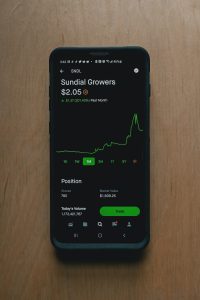Forex trading is a popular way of making money online, but like any other investment, it comes with its own set of risks. To be successful in forex trading, you need to know how to manage your trades effectively. Managing forex trades refers to the process of monitoring and adjusting your trades to maximize profits and minimize losses. In this article, we will discuss some tips on how to manage forex trades.
1. Set Stop Losses
The first step in managing forex trades is to set stop losses. Stop losses are orders that allow you to limit your losses by automatically closing a trade if the price moves against you. Stop losses are essential because they help you to protect your capital and prevent large losses. You should always set stop losses when you open a trade, and adjust them as the market moves.
2. Take Profits
Taking profits is as important as setting stop losses. Taking profits means closing a trade when it has reached a predetermined profit level. It is important to take profits because the market can be unpredictable, and a profitable trade can quickly turn into a losing one. You should always have a profit target in mind when you open a trade, and adjust it as the market moves.
3. Use Trailing Stop Losses
Trailing stop losses are a powerful tool that allows you to lock in profits while still allowing your trade to run. A trailing stop loss is an order that moves with the market as it moves in your favor. For example, if you buy a currency pair at 1.2000 and set a trailing stop loss of 50 pips, the stop loss will move up to 1.2050 if the price moves up to 1.2050. If the price then falls back to 1.2000, the stop loss will remain at 1.2050. Trailing stop losses are useful because they allow you to protect your profits while still giving your trade room to move.
4. Monitor the Market
Monitoring the market is essential in forex trading. You need to keep an eye on the news, economic data, and market trends. This will help you to identify potential trading opportunities and adjust your trades accordingly. You can use technical analysis tools such as charts and indicators to help you analyze the market.
5. Use Position Sizing
Position sizing refers to the process of determining how much of your trading capital to risk on each trade. Position sizing is important because it helps you to manage your risk and prevent large losses. A common rule of thumb is to risk no more than 2% of your trading capital on each trade. This means that if you have a trading capital of $10,000, you should risk no more than $200 on each trade.
6. Avoid Overtrading
Overtrading is a common mistake among forex traders. Overtrading refers to the practice of opening too many trades at once or trading too frequently. Overtrading can lead to emotional trading, which can result in large losses. To avoid overtrading, you should have a trading plan and stick to it. You should also avoid trading during volatile market conditions or when you are feeling emotional.
In conclusion, managing forex trades is an essential part of being a successful forex trader. By setting stop losses, taking profits, using trailing stop losses, monitoring the market, using position sizing, and avoiding overtrading, you can maximize your profits and minimize your losses. Remember that forex trading is a risky investment, and you should always trade with caution and discipline.






